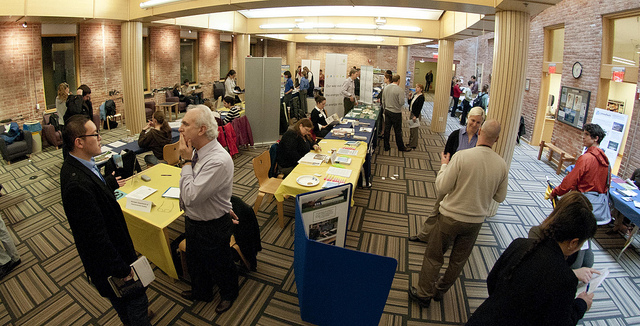
Too many self-serving studies out there, say academics with new research.
Have you ever heard of the skills gap?
The "skills gap" is a term that means: there aren’t enough qualified workers in the United States to fill vacant manufacturing jobs.
Deloitte, a very big business consultancy, calls it “a sizeable gap between the talent [manufacturers] need to keep growing their businesses and the talent they can actually find.”
But does it exist? To some extent, yes. Consider an article from a few years ago, titled “Employers Aren’t Just Whining – the ‘Skills Gap’ is Real.” The author, a Boston University economist, takes issue with some arguments made by skills-gap skeptics, writing that “a worldwide scheme by thousands of business managers to manipulate public opinion seems far-fetched.”
His own conclusion is that “the evidence highlights instead just how difficult it is to measure worker skills, especially those relating to new technology.”
Well, there’s a new skeptical study out on the skills gap – and this one isn’t funded by a consulting firm.
Researchers from the University of Illinois and the Massachusetts Institute of Technology prepared a paper, to be published in an upcoming edition of the ILR Review, which is “[t]he first nationally representative survey to measure the precise skills manufacturers are looking for in conjunction with hiring outcomes and organizational characteristics.”
The results are striking: Three-quarters of U.S. manufacturing plants show no sign of hiring difficulties for open positions. A demand for higher-level math and reading skills is a predictor of long-term job vacancies, but a demand for computer skills or other problem-solving skills isn’t. And manufacturing clusters – like a group of high-tech aerospace manufacturers all centered in the same geographic location, which draw skilled employees who can meet a cluster’s unique employment demands – tend to have the longest job vacancies.
One of the researchers, Andrew Weaver, described that cluster problem like this:
“Because you have so many disaggregated firms, you no longer have the internal economies of scale for training. You can't afford a training department when you're a smaller shop that may hire only one or two people per year. And those same firms don't have the pull that, say, Kodak did in its heyday, when it employed 63,000 workers in Rochester, New York. They could to go to the local community college and say, 'We need you to teach these skills.'"
So what's the big takeaway from their study? The researchers say quality isn't a big issue with the American workforce. Rather, what is missing is a bridge between workers and employers that can “help knit the supply and demand sides of the market together."
And what’s an example of such a bridge? A community college or a trade association that can help adequately prepare workers for jobs in a constantly shifting economy.
And you know what’s striking? That’s pretty close to what that Boston University economist prescribed a few years ago, when he wrote: “Policy makers also need to think differently about skills, encouraging, for example, industry certification programs for new skills and partnerships between community colleges and local employers.”
Sounds like good advice. Maybe something like this program here?

